There aren’t actually two Windsor Castles. There is only one Windsor Castle, which is located in Windsor, Berkshire, England. It is the world’s oldest and largest inhabited castle and has been the home of British kings and queens for almost 1,000 years. The confusion might arise from the existence of the House of Windsor, which is the British royal house. The historic Windsor Castle estate inspired the name.
Let’s dive into the deeper insights on 2 Windsor Castles.
I. Introduction – A Majestic Presence and the Enduring Myth
Standing proudly on the banks of the River Thames, Windsor Castle casts a long shadow over British history. For nearly 1,000 years, its imposing walls have witnessed the rise and fall of monarchs, sheltered momentous events, and symbolised England’s enduring legacy. Yet, a curious misconception persists the belief in the existence of two Windsor Castles. This persistent myth, perpetuated by folklore and even fictional depictions, often clouds the true majesty and historical significance of the single, awe-inspiring edifice that truly stands.
The idea of two Windsors likely stems from several factors. Some might confuse the inner and outer wards of the castle complex, referring to them as “Upper” and “Lower” Windsor. Others, aware of its extensive history and various renovations, might misinterpret “New Windsor” as a separate structure. Perhaps the existence of other castles bearing the “Windsor” name worldwide contributes to the confusion. Regardless of the origin, understanding the true story of Windsor Castle requires dispelling this misconception and delving into its unique and magnificent reality.
This journey will debunk the myth and unveil the captivating tapestry of Windsor’s history, revealing its architectural intricacies and enduring role in the British monarchy. We will explore significant historical events that unfolded within its walls. We will marvel at the architectural mastery evident in its diverse styles and hidden gems. Finally, we will witness Windsor’s continued relevance as a vibrant royal residence and a venue for state occasions, solidifying its position as a national treasure.
So, prepare to embark on a journey through time, dispelling myths and uncovering the true essence of this iconic landmark. Join us as we unravel the captivating story of Windsor Castle. This singular presence is a testament to history, architecture, and the enduring spirit of a nation.
Also, read:
- Windsor Castle Opening Times: Everything You Need to Know.
- Windsor Castle Tickets: A Proven Comprehensive Guide.
- Windsor Castle Changing of the Guard: Where History Coming Alive.
- Are There Steps, Elevators or Lifts in Windsor Castle
II. Deconstructing the Myth: Untangling Common Misconceptions about Windsor Castle

The idea of two Windsors might seem plausible at first glance. Still, a closer examination reveals the inaccuracies behind this enduring myth. Let’s unravel the most common misconceptions and understand the historical context that might have fueled them.
A. Inner and Outer Windsor: One Castle, Diverse Areas:
One misconception arises from the castle’s division into “Upper Ward” and “Lower Ward.” The Upper Ward, housing the State Apartments, St. George’s Chapel, and the Round Tower, embodies the historic royal residence. The Lower Ward, encompassing the former military garrison and service areas, provides support functions. While distinct in purpose and historical evolution, they’re seamlessly integrated within the single castle complex.
B. Renovations and Expansions: Building Upon a Legacy:
Another source of confusion stems from Windsor’s continuous growth and renovation throughout history. The castle has constantly evolved from its earliest Norman keep to the addition of the State Apartments in the 17th and 18th centuries. References to “New Windsor” might allude to these historical expansions. Still, they represent periods of significant architectural change, not the construction of a separate castle.
C. Worldwide “Windsors”: Similar Names, Distinct Identities:
The existence of other castles bearing the “Windsor” name around the world can further fuel the myth. However, these castles, such as Windsor Castle in Ireland or Windsor Estate in New York, are entirely distinct entities with their own rich histories. Understanding their unique identities helps differentiate them from the true Windsor Castle in England.
D. Folklore and Fictional Depictions: Tales and Misinterpretations:
Folklore and fictional portrayals sometimes contribute to the myth. Legends like “Herne the Hunter” might weave tales of multiple locations within the castle complex, creating a sense of separate entities. Similarly, fictional works might take creative liberties, depicting fictional “twin” castles for dramatic effect. While these tales add to the castle’s mystique, it’s essential to understand them as works of imagination, not historical fact.
E. Understanding Historical Context: Evolution and Misconceptions:
The castle’s transformation over time also plays a role. Changes in appearance, purpose, and even accessibility throughout history could have contributed to the misconception of separate structures. For example, dismantling the Outer Bailey wall in the 19th century might have created a visual difference between the inner and outer wards, potentially fueling the “two castles” idea.
By comprehending these common misconceptions and their historical context, we can set the record straight and move toward appreciating the true and singular presence of Windsor Castle.
Also, read:
- 10 Best Fish and Chips Near Windsor Castle
- Windsor Castle Tour: A Comprehensive and Best Guide.
- Windsor Castle Tickets Advantage Card: Know Everything.
- Exploring Buckingham Palace to Windsor Castle Journey.
III. Beyond the Myth: Unveiling Windsor’s Uniqueness
Now that we’ve debunked the myth of two Windsors, it’s time to genuinely appreciate the singular masterpiece that stands before us. Windsor Castle boasts a rich history, captivating architecture, and an enduring role in the British monarchy, solidifying its unique position as a national treasure.
A. A Tapestry of History: Witnessing the Unfoldment of Britain:
Windsor Castle’s story threads seamlessly through the fabric of British history. From its origins as a Norman stronghold in the 11th century, it has witnessed pivotal moments and sheltered remarkable figures. Kings and queens like Henry VIII and Elizabeth I held court within its opulent chambers, shaping the nation’s course. In times of conflict, it served as a strategic fortress, withstanding sieges and protecting the royal family. Each era has left its mark, weaving a captivating tapestry of historical significance.
B. An Architectural Masterpiece: From Norman Keep to Gothic Grandeur:
Windsor Castle isn’t merely a testament to history; it’s a stunning architectural marvel. Its design reflects various styles and periods, showcasing the evolution of British architecture. The imposing Norman keep, constructed by William the Conqueror, symbolises its defensive origins. The State Apartments, added in the 17th and 18th centuries, showcase Baroque grandeur with intricate interiors and opulent furnishings. St. George’s Chapel, a masterpiece of Perpendicular Gothic architecture, features breathtaking stained glass windows and intricate craftsmanship. Exploring these diverse areas is like journeying through time, experiencing the architectural brilliance of different eras.
C. Hidden Gems and Intricate Details: Unveiling the Castle’s Secrets:
Beyond the grand State Apartments and iconic landmarks, Windsor Castle holds hidden gems waiting to be discovered. The Grand Staircase, adorned with portraits of monarchs, whispers tales of past residents. The Queen Mary’s Dolls’ House, a miniature masterpiece, showcases meticulous craftsmanship and offers a glimpse into royal life. The Long Walk, a picturesque avenue leading to Windsor Great Park, provides a sense of scale and grandeur. Uncovering these hidden details enriches the experience, revealing the castle’s intricate personality and fascinating stories.
Also, read:
- How Far is Windsor Castle from Buckingham Palace? Royal Mile?
- How to Get to the Windsor Castle from London
- Who Lives in the Windsor Castle?
IV. Setting the Record Straight: Why One Castle Reigns Supreme
With a deeper understanding of Windsor Castle’s history and architectural marvels, we can definitively state that there is only one Windsor Castle. The confusion surrounding its supposed doppelganger stems from various misconceptions and historical complexities, as explored earlier. However, considering established historical knowledge, no evidence supports the existence of a separate castle.
A. Confronting the Inaccuracy: No Doubts Remain:
Legends, folklore, and even artistic liberties might perpetuate the myth of two Windsors, but a closer examination of historical records reveals no concrete proof of a second castle. Recognizing the inaccuracies within these narratives is crucial to appreciating the true essence of this iconic landmark.
B. Importance of Historical Accuracy: Preserving the Past, Shaping the Future:
Understanding and preserving historical accuracy is vital for several reasons. It allows us to appreciate historical landmarks like Windsor Castle in their true light, recognising their significance and impact on the past. It also prevents the spread of misinformation, ensuring future generations understand their heritage clearly. By debunking the “two Windsors” myth, we contribute to accurate historical representation and pave the way for informed appreciation of this national treasure.
Also, read:
- Are Babies Free for Windsor Castle
- Are Dogs Allowed into Windsor Castle
- Comparing Shops Near Windsor Castle
- Are There Women in the Coldstream Guards at Windsor Castle
V. More Than Just Bricks and Mortar: The Enduring Legacy of Windsor Castle
Windsor Castle transcends its majestic walls and intricate history to hold a deep-rooted significance in the present and future of the British monarchy. It’s more than just a historical landmark; it’s a living, breathing symbol of continuity and tradition, constantly evolving while honouring its heritage.
A. A Vibrant Royal Residence: Witnessing History Unfold:
Windsor Castle remains a cherished royal residence, offering the Queen and other members of the royal family a private haven away from public scrutiny. It regularly hosts state visits, inaugurations, and other official engagements, providing a stage for diplomatic relations and public appearances. Stepping into the Grand Reception Room, one imagines the echoes of conversations between monarchs and world leaders throughout history. Witnessing the changing of the guard ceremonies fills the air with pomp and tradition, reminding us of the castle’s enduring role in British life.
B. A Legacy in Stone: From Past to Present:
The castle’s legacy isn’t limited to official functions; it fosters cultural experiences and educational opportunities. It houses the Royal Collection, showcasing an impressive array of artworks, furniture, and historical artefacts that tell the story of the monarchy and British history. Public tours and educational programs open its doors to visitors, fostering an appreciation for its heritage and artistic treasures. The changing guard ceremony, televised and witnessed by millions, ensures the castle’s presence in contemporary life, connecting past and present through tradition.
C. The Future Unfolds: A Symbol of Continuity and Change:
As the monarchy evolves, Windsor Castle adapts. Recent initiatives have emphasized sustainability and public engagement, ensuring relevance in a changing world. For instance, the castle has adopted eco-friendly practices such as installing solar panels to generate renewable energy and implementing a rainwater harvesting system for irrigation.
Additionally, they’ve expanded public outreach through educational programs offered to local schools and online content like virtual tours and historical talks on social media. These efforts demonstrate the castle’s commitment to both environmental responsibility and connecting with a wider audience.
Ongoing conservation efforts strive to preserve its architectural integrity for future generations. While the monarchy’s role might be debated, there’s no denying Windsor Castle’s enduring symbolic power. It is a testament to centuries of history, cultural heritage, and national identity, adapting to remain a relevant and cherished landmark for years to come.
VI. Bonus: Facts, Trivia, and Pop Culture Connections:
A. Fascinating Facts:
- The castle has over 1,000 rooms spread across 13 acres.
- The Round Tower leans over three feet due to an unstable foundation.
- The Queen often spends weekends and Easter at Windsor Castle.
B. Intriguing Trivia:
- Legend has it that King Edward IV’s ghost haunts the Long Walk.
- The castle housed prisoners during the American Revolutionary War.
- Queen Elizabeth II hosted her wedding reception at Windsor Castle in 1947.
C. Pop Culture Connections:
- The castle has been featured in films like “The King’s Speech” and “The Crown.”
- It served as the inspiration for Disney’s Sleeping Beauty Castle.
- The changing of the guard ceremony frequently appears in media coverage of the British monarchy.
We gain a deeper appreciation for the castle’s multifaceted presence in our collective imagination by exploring these facts, trivia, and pop culture connections.




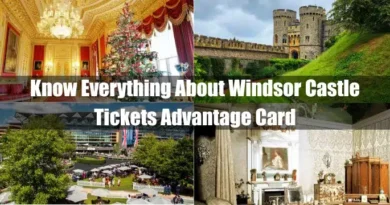
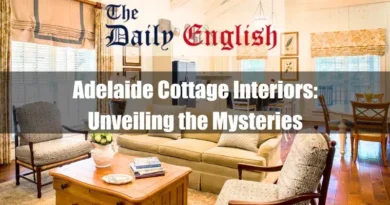
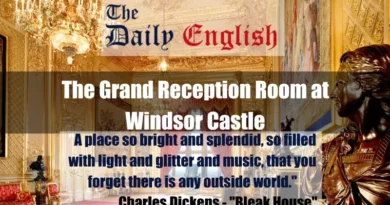
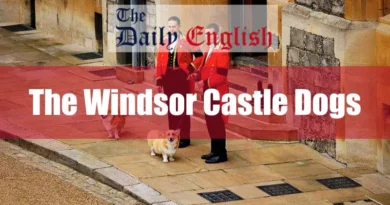
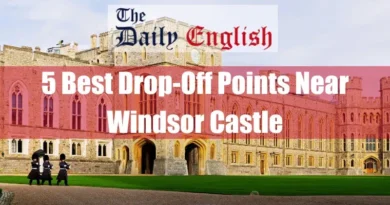
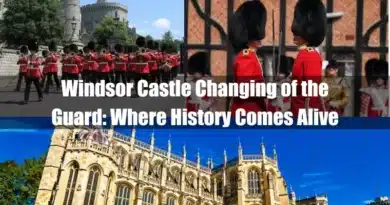
Comments are closed.